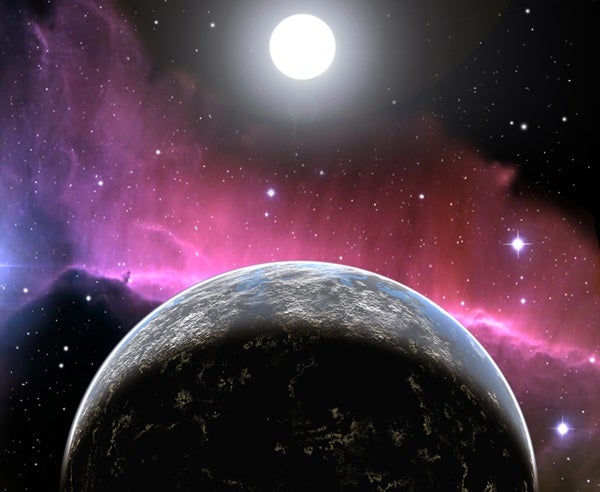Astronomers have proposed an improved method of searching for intelligent extraterrestrial life using instruments like one now under construction in Australia. The Low Frequency Demonstrator (LFD) of the Mileura Wide-Field Array (MWA), a facility for radio astronomy, theoretically could detect Earth-like civilizations around any of the 1,000 nearest stars.
“Soon, we may be eavesdropping on signals from Galactic civilizations,” says theorist Avi Loeb of the Harvard-Smithsonian Center for Astrophysics (CfA). “This is the first time in history that humans will be capable of finding a civilization like ours among the stars.”
Loeb presented his findings in a press conference at the American Astronomical Society meeting in Seattle.
Previous SETI programs would not have detected an Earth-like civilization. The searches often looked for beacon-like signals deliberately beamed across space. Such beacons may not exist. Also, most radio SETI projects examined frequencies higher than 1 Gigahertz in order to avoid interference from both Earth-based and natural cosmic sources.
Instead of looking for deliberate broadcasts, Loeb and his co-author Matias Zaldarriaga (CfA) suggest looking for accidental leakage from an alien civilization. They point out that the new MWA-LFD, which is designed to study frequencies of 80-300 Megahertz, will pick up the same frequencies used by Earth technologies. On Earth, military radars are the most powerful broadcast sources, followed by television and FM radio. If similar broadcast sources exist on other planets, facilities like MWA-LFD might detect them.
“The MWA-LFD is a science instrument intended to study the distant, young universe,” explained Zaldarriaga. “But by piggybacking onto its normal observations, SETI researchers could use it to look for E.T. civilizations.”
A SETI program at the MWA-LFD would complement other SETI projects. It will observe a larger area of the sky over a longer period of time and in a different frequency range.
Loeb and Zaldarriaga calculate that by staring at the sky for a month, the MWA-LFD could detect Earth-like radio signals from a distance of up to 30 light-years, which would encompass approximately 1,000 stars. More powerful broadcasts could be detected to even greater distances. Future observatories like the Square Kilometer Array could detect Earth-like broadcasts from 10 times farther away, which would encompass 100 million stars.
If alien broadcasts were detected, additional observations could measure characteristics of the source planet, such as how fast it rotates or how long its year is. By combining that information with knowledge of the parent star, astronomers could estimate the temperature on the planet’s surface to assess whether it may have liquid water and life as we know it.
The MWA-LFD is a radio telescope designed to detect and characterize highly redshifted 21-centimeter emission from hydrogen molecules in the early universe. Its key scientific goal is to create a three-dimensional map of ionized “bubbles” that formed as the first quasars and galaxies flooded space with ultraviolet light billions of years ago.










